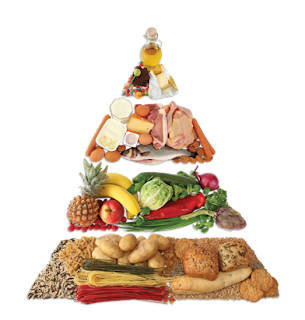Reducing your level of body fat through diet will not only improve your overall health, but it will also help you to fit into old clothes that hide in the back of the closet. The Centers for Disease Control and Prevention states that between 1985 and 2010, statistics indicated a significant increase in adult and childhood obesity. The prevention or treatment of obesity requires incorporating a nutritious diet into your lifestyle. Consult with your healthcare adviser or nutritionist for diet recommendations.
Step 1
Speak with a dietitian to discuss a weight loss goal. Most dietitians suggest losing a maximum of 2 pounds of body fat each week; however, severely overweight or obese individuals may have a tendency to drop weight at a quicker pace than their peers who are at a normal weight. Discuss with your dietitian any health concerns you may have. If you have been diagnosed with diabetes, for instance, he may recommend that you refrain from ingesting certain foods that have a tendency to cause blood-glucose fluctuations. Also, discuss with your dietitian how many calories you should be eating, given your level of activity. According to the University of Iowa Hospitals & Clinics, the average adult requires approximately 2,200 calories; however, your intake may vary depending on activity level, gender, age and health. One pound of body fat equals 3,500 calories, according to MayoClinic.com, so to lose 1 pound of body fat each week, you should have a daily caloric deficit of 500 calories.
Step 2
Reference the USDA's MyPlate for suggestions on foods to incorporate into a nutritious diet. MyPlate offers an effective starting point for understanding portion sizes for individuals who struggle with fat loss. According to the MyPlate illustration, half of a serving plate should be filled with fruits and vegetables, while the other half should include whole grains and lean protein. Additions, such as oil and sugar, should be used sparingly as they are high in calories and generally void of nutrition. If using sugar, consider less-processed sugar, such as cane sugar, which provides more nutrients than granulated sugar.
Step 3
Replace high-fat or high-sugar food items with healthier alternatives. The focus of a diet should never be about foods you can't have; rather, it should be about how you can still enjoy the foods you love, but in either a smaller amount or a healthier version of it. Breakfast cereals, for instance, are often loaded with sugar. Swapping your regular bowl of cereal for yogurt topped with crumbled granola is not only healthier, but offers a similar taste and texture to cereal.
Step 4
Reduce your intake of starchy carbohydrates, such as potatoes. Although potatoes have nutritional value, they may take on many unhealthy forms, such as french fries or potato chips. While starchy carbs don't need to be eliminated from your diet entirely, you should be more critical about how your vegetables are processed. Furthermore, starchy carbohydrates typically have a high glycemic index, which means they have a greater impact on blood-glucose levels. The body utilizes glucose for energy; however, if more glucose exists in the bloodstream than it requires for energy, the excess glucose gets stored as fat.
Step 5
Opt for healthier beverage and snack options. Many calories are wasted through drinks and snacks alone. A 12-ounce can of cola, for instance, contains 136 calories and almost no nutritional value, according to the USDA Nutrient Data Laboratory. Consuming multiple cans of cola each day can really add up and stall your weight loss efforts. Instead, reach for freshly squeezed juice with no added sugar, water or tea with a squirt of lemon juice. Replace chips, which are often high in fat, sodium and calories, with fresh fruits or vegetables.
